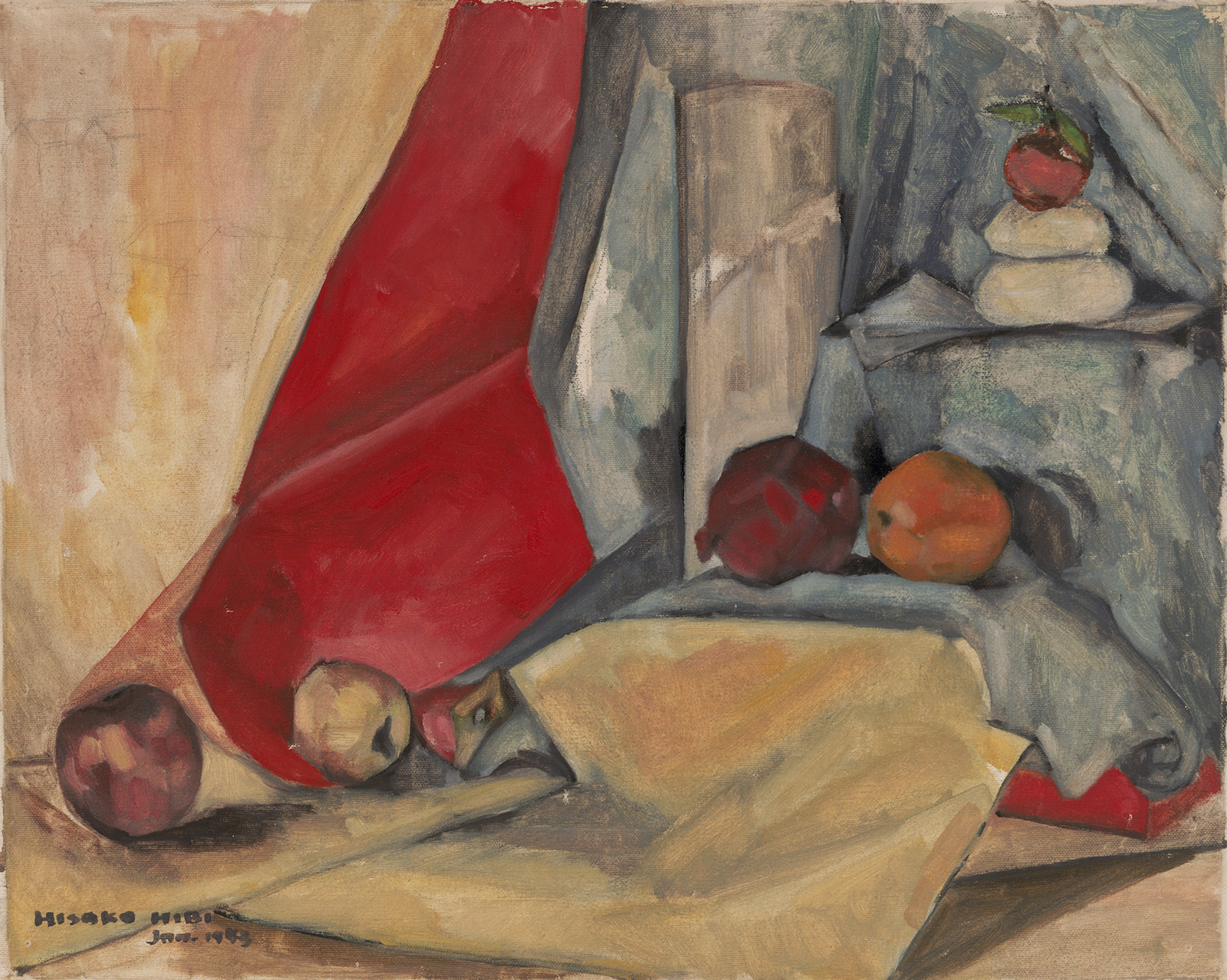- Can you spot the mochi in this painting?
- What else do you see depicted?
- What would you say is the mood of this painting?
This painting was made by an artist named Hisako Hibi. During World War II, she was incarcerated in a concentration camp in Topaz, Utah, and it was there that she painted this image. The formation of two stacked mochi topped with a small citrus is called an okasane. It symbolizes hope for health and prosperity and is often displayed in homes during the New Year season.
- Why might painting a picture of an okasane be important to Hibi while she is in camp?
On the back of this painting is an inscription that reads:
Hisako Hibi. Jan 1943 at Topaz. Japanese without mochi (pounded sweet rice) is no New Year! It was very sad oshogatsu (New Year). So, I painted okazari mochi in the internment camp.
- Now that you know what is written on the back, does it change the mood of this painting for you? If so, how?

